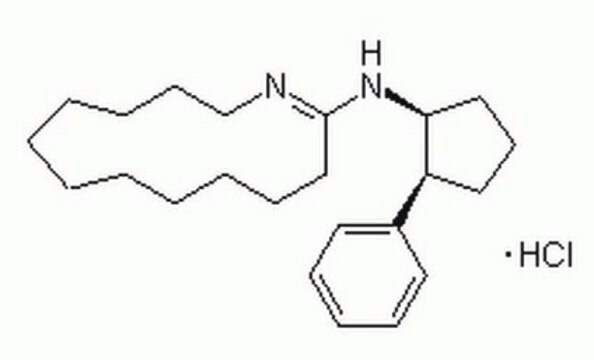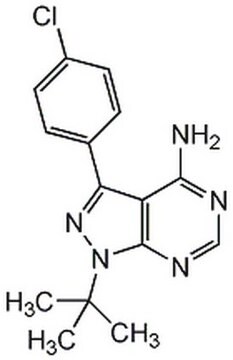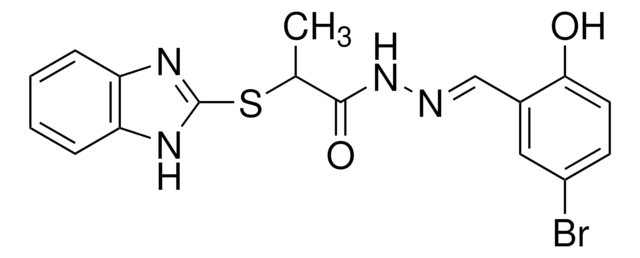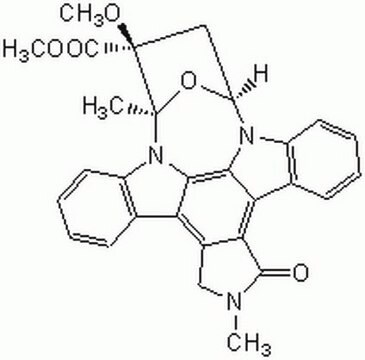529573
PP2
≥95% (HPLC), solid, Src protein tyrosine kinase inhibitor, Calbiochem®
Synonym(s):
PP2, AG 1879, 4-Amino-5-(4-chlorophenyl)-7-( t-butyl)pyrazolo[3,4-d]pyrimidine
About This Item
Recommended Products
Product Name
PP2, PP2, CAS 172889-27-9, is a potent, reversible, ATP-competitive, inhibitor of the Src family of protein tyrosine kinases (IC₅₀ = 4, 5, 5, &100 nM for p56lck, p59fynT, Hck, & Src, respectively).
Quality Level
Assay
≥95% (HPLC)
form
solid
manufacturer/tradename
Calbiochem®
storage condition
OK to freeze
color
off-white
solubility
DMSO: 20 mg/mL
shipped in
ambient
storage temp.
−20°C
SMILES string
Clc1ccc(cc1)c2n[n](c3ncnc(c32)N)C(C)(C)C
InChI
1S/C15H16ClN5/c1-15(2,3)21-14-11(13(17)18-8-19-14)12(20-21)9-4-6-10(16)7-5-9/h4-8H,1-3H3,(H2,17,18,19)
InChI key
PBBRWFOVCUAONR-UHFFFAOYSA-N
General description
Biochem/physiol Actions
p56lck
Packaging
Warning
Preparation Note
Other Notes
Salazar, E.P., and Rozengurt, E. 1999. J. Biol. Chem. 274, 28371.
Hanke, J.H., et al. 1996. J. Biol. Chem.271, 695.
Selected Citations
Lee, J., et al. 2009. Cell Stem Cell5, 76.
Legal Information
Storage Class Code
11 - Combustible Solids
WGK
WGK 3
Certificates of Analysis (COA)
Search for Certificates of Analysis (COA) by entering the products Lot/Batch Number. Lot and Batch Numbers can be found on a product’s label following the words ‘Lot’ or ‘Batch’.
Already Own This Product?
Find documentation for the products that you have recently purchased in the Document Library.
Customers Also Viewed
Our team of scientists has experience in all areas of research including Life Science, Material Science, Chemical Synthesis, Chromatography, Analytical and many others.
Contact Technical Service










